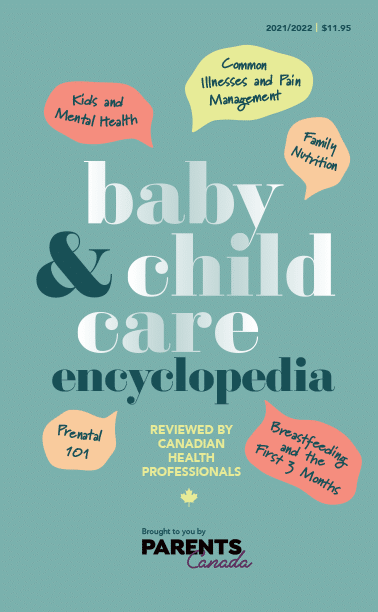Toddler
14 min Read
Sleep Basics by Age

November 4, 2021
Toddler
14 min Read

November 4, 2021

Ask any parent and they’ll be quick to tell you that sleep—or lack thereof—is often on their minds. It’s one of the most common complaints paediatricians hear. In fact, research shows that up to 50 percent of children experience sleep struggles at some point (which means their parents do, too!). That isn’t to say you’ll never sleep soundly again. Having an understanding of sleep as it pertains to your child at each stage of development will help everyone more zzz’s.
So what are sleep struggles? They can range from a baby waking for a feeding to your toddler stalling at bedtime (just *one* more story!), trouble falling asleep or waking in the night due to nightmares, sleep terrors and sleepwalking.
It’s a no-brainer that sleep is important. Without it, we’re all a bit on edge. But it’s especially important for kids to get the right amount of shuteye, as lack of sleep directly affects their psychological and physical development and can lead to a host of issues affecting their daily function, focus, productivity, mood and behaviour.
Most of the time the signs are obvious, but here are some easy indicators of a poor night’s sleep:
But it goes beyond your child and their behaviour and temperament, because having Captain Cranky Pants on the loose can also cause a lot of emotional unrest at home. The lack of sleep can cause huge parental distress (and disturb your own sweet slumber), which can lead to less effective parenting and strained relationships. And it doesn’t take much; even losing 30 to 60 minutes of sleep can take a toll on your child’s behaviour.
Children get most of their deep sleep in the first third of the night. Light sleep is the most common in the last half to last third of the night which is why young children sometimes wake more as the night goes on. Periods of REM dreaming sleep increase as the night progresses. This is why we often wake up in the morning and can remember dreaming. It is normal for children to partially wake about two to six times a night.
| CHILD’S AGE | NIGHT | DAY | TOTAL* |
| 0 to 3 months | Unpredictable | Varies widely | 14 to 17 hours |
| 3 to 12 months | 11 to 12 hours | 2 to 4 hours | 14 to 15 hours |
| 1 to 2 years | 11 to 12 hours | 1 ½ to 3 hours | 11 to 14 hours |
| 3 to 5 years | 10 to 13 hours | 0 to 2 hours | 10 to 13 hours |
| 6 to 12 years | 9 to 11 hours | No nap | 9 to 11 hours |
*Children may sleep longer at night after they drop their nap
As you may have noticed, newborns tend to sleep a lot. They’re in a new place and it’s a lot to take in. Often, newborns will fall asleep after just one to two hours of being awake, though every baby is different. Some newborns will sleep more and wake for a short period. Others may be more wakeful and fussy, only snoozing for short snippets. Your baby will let you know which he prefers, so follow his lead.
Your feeding style can sometimes dictate sleeping patterns. When babies are breastfed, they may sleep for two- to three-hour stretches. Bottle-fed babies average around two to five hours.
Common Newborn Sleep Patterns
In the first few weeks, you may notice irregular sleeping patterns. Your baby is still getting adjusted to day and night. Because of their small stomachs, babies wake up to eat every few hours. Every baby is different but generally at the three-month mark, your baby will display a more regular sleep-wake cycle, maybe even sleeping through the night.
What is Day/Night Reversal?
It’s not uncommon for some newborns to sleep more during the day than during the night. This backwards sleeping habit is called day/night reversal and it’s usually temporary. Here’s how to help them align to your schedule and teach them that nighttime is for sleeping:
It’s not one-size-fits-all when it comes to helping your baby’s schedule realign. Some developmental issues can also impact sleep like:
Newborn Sleep Recommendations
Here are a few tips to keep in mind when it comes to safe sleep for your new addition.
Nighttime sleep stats to consolidate at two months of age with nine to 12 hours of sleep occurring at night. The number of naps your baby needs will usually decrease from four to two, generally by the age of one.
Common Infant Sleep Patterns
Infants tend to be dependent on parental help to fall asleep. You may find they go down easiest when you rock or feed them.
By the age of three to six months, most babies are capable of sleeping through the night. However, many will continue to wake due to continued nighttime feeds and things like needing a pacifier or a diaper change.
Short naps or missed naps during the day are common in infancy and are often the result of not being able to fall asleep independently.
Developmental Issues That Can Affect Infant Sleep
There are a few things that can cause or worsen sleep problems at this age including:
Infant Sleep Recommendations
To ensure your baby gets a safe and comfortable sleep, try the following:
To ensure a safe sleep, refer to these guidelines from Health Canada.
- Young children should sleep on a firm flat surface in a crib or bassinet for all sleep periods (e.g. car seats and infant swings should not replace the crib for sleep).
- Always place your baby on his back to sleep when placing him in his crib until 12 months of age. The “Back to Sleep” position is associated with a reduced risk of SIDS.
- Avoid all soft and non-breathable materials in a child’s crib.
- Do not let anyone smoke near your baby, including near where your baby sleeps or spends time. Exposure to smoke is one of the greatest risk factors for SIDS.
- Co-sleeping is not recommended due to evidence linking it with accidental smothering and suffocation by parents or bedding. Co-sleepers that are attached to a bed are not recommended due to safety concerns.
- Room-sharing (e.g. having your baby sleep in a crib next to your bed) until six months of age is associated with a reduced risk of SIDS.
- Avoid overheating your child. Being overheated is a risk factor for SIDS and can lead to discomfort during sleep.
- Ensure your baby’s crib meets current Health Canada regulations
- Keep the crib away from windows, curtains, blind cords, lamps, electrical plugs and extension cords; keep out of reach of small objects.
- There appears to be an association between pacifier use at bedtime and a reduced risk of SIDS.
Welcome to the toddler phase. A lot of key development happens at this stage. Most toddlers will drop their morning nap between 12 and 24 months of age. The remaining nap should be scheduled after lunch. One daily nap will generally extend into the preschool years.
Common Toddler Sleep Problems
Many toddlers continue to be dependent on their parents to fall asleep. Here are a few other things you may notice with your toddler:
Developmental Issues That Can Impact Toddler Sleep
The following can hinder your toddler’s rest:
Toddler Sleep Recommendations
Use these tips to help your toddler snooze like a champ:
Your preschooler’s development is probably blowing your mind at this point. Most are ready to stop napping between ages three and four (though some nap until age five). Because of this, bedtime may need to be a bit earlier.
Common Sleep Problems for Preschoolers
Resisting bedtime and not falling asleep independently usually continue to occur in up to 50 percent of preschoolers. This is often due to poor sleep habits and limit-testing behaviours.
Development Issues that Can Impact Preschooler Sleep
Your little one has an active imagination and is becoming more and more independent, which can sometimes make bedtime challenging.
Sleep Recommendations for Preschoolers
All is not lost when bedtime feels like a negotiation strategy gone wrong. Try these tips:
Sleep is likely coming a bit easier to everyone in your house, but there are still some challenges that come with sleep for bigger kids.
Common Sleep Problems for School-Aged Kids
Children in this age set may have trouble falling asleep due to general anxiety, nighttime fears, consumption of caffeine or being over stimulated before bed. Many school-aged kids go to bed too late and don’t get enough sleep. Sleepwalking is most prevalent between the ages of four and eight. It can include sitting up in bed, mumbling, walking around the house and urinating in places other than the bathroom. Talk to your doctor if you’re concerned, but treatment isn’t usually required.
Developmental Issues That Can Impact your School-Aged Kid’s Sleep
Bedtime is probably getting a bit easier, but with that bright, active mind comes a new set of triggers, like anxiety and the allure of screen time.
Sleep Recommendations for School-Age Kids
There may be more of a tug-of-war regarding negotiations and a push to stay up due to ever-expanding independence but try to do the following:
Chat with your paediatrician if your child displays any of the following:
